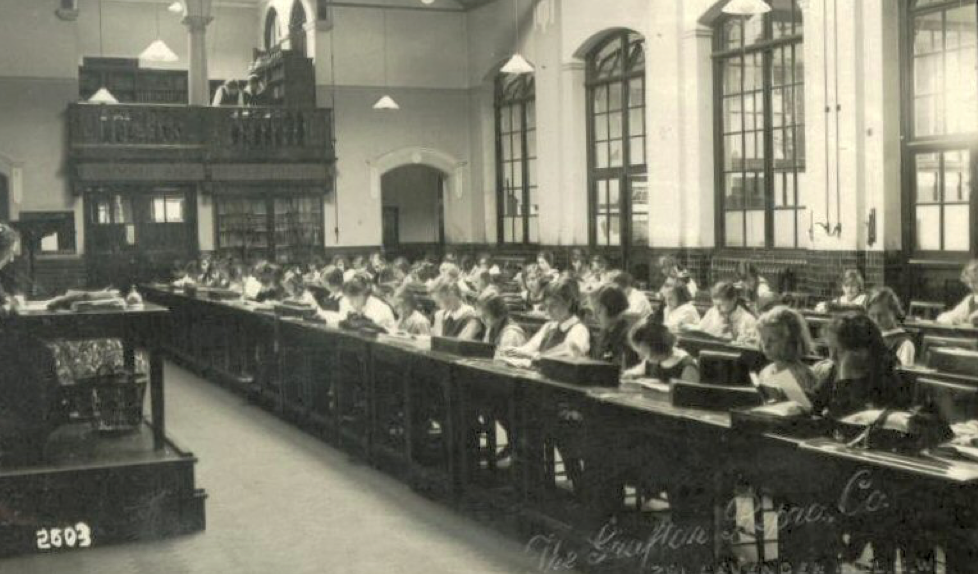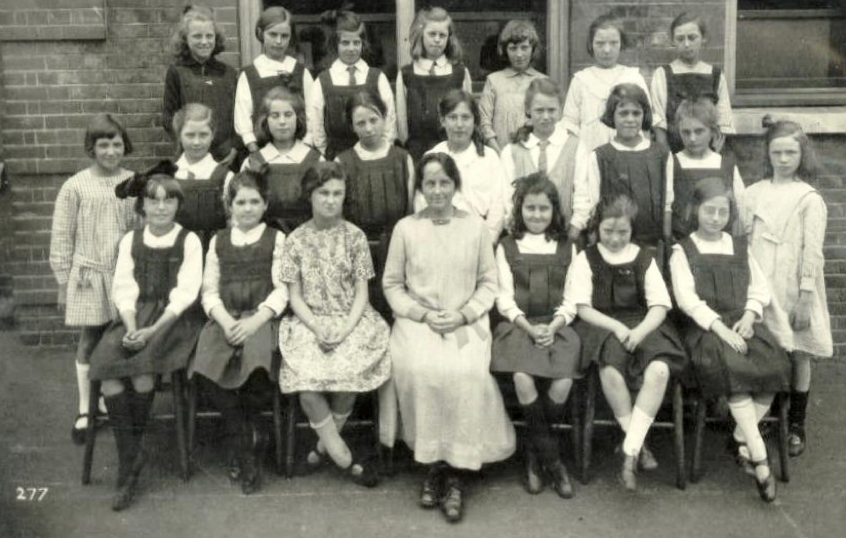1914 - 1927
The Great War brought permanent changes to Eltham. The village of 1900 grew to a town of 40,000; green fields were replaced by churches, cinemas and shops. Once again, munitions workers flooded into the Arsenal at Woolwich and part of the Deansfield building was taken to provide elementary education for their children. This was a great disappointment but school life continued despite the disruption of frequent air-raid warnings. There was no talk of evacuation.
During the war the school actively supported the 15th Battalion, County of London Regiment, after the Major in charge of Headquarters wrote to Miss Bramwell asking for her support in a recruiting campaign in the mistaken belief that her pupils were boys. To make up for his disappointment, the girls regularly knitted comforts for the Battalion troops and received letters from the Major in return. In December 1915 the school adopted a Woolwich prisoner-of-war in Germany, Private W. Miles, and sent him regular parcels. Refugees began to arrive in Woolwich and six Belgian girls received their education at Eltham. Some had escaped with their families but others had no news whatever of their relatives left behind.
In June 1916, the school achieved its 10th anniversary but there were no special celebrations because of the war. There was however a special edition of the magazine, devoted in part to a record of the school’s war work, but mainly a review of the first 10 years. The record of that first ten years tells an impressive story of achievement in academic results, social service and personal development. The teachers appointed to the newly created secondary schools had been women of wide experience and advanced ideas about the part schools should play in the education of girls. Their dedication and the talents and determination of the pupils themselves were bearing impressive fruit. The News of Old Girls in 1916 includes university graduates and students, teachers and trainee teachers, nurses, civil servants and employees in banking, insurance and business. In 1916, neither they nor their teachers were yet entitled to vote but in later years an early pupil was to become not only an M.P. but also a Minister of the Crown.

Study Hall at Deansfield Road – 1919.
The ending of the Great War and the return to peace seems to have brought few changes to school life though there is a long gap in the records between 1916 and the launch of a new magazine in 1924. This and subsequent magazines record that in the 1920’s examination successes continued to rise, numbers of girls went to university and in 1924 a pupil won one of the first State Scholarships. Clubs and societies continued to flourish. The Art Circle, founded in 1910, provided flowers for schools in less fortunate districts. The Meteorological Society made daily weather observations, even on Saturdays, and the school became an official Met. Office School Weather Station. From 1920 onwards, holiday excursions to France and Belgium were organized and led by members of staff. The strong tradition of social service was crystallized into the House system of the 1920’s. Every pupil joined a House of her choice – their role was not social or competitive, but to support a particular charity or community purpose. These included the Deptford Play Centre, Dr. Barnardo’s Homes, the Woolwich Invalid Children’s Aid Association and a cot at the Elizabeth Garrett Anderson Hospital. In addition, clothing was collected for the Poor Children’s Clothing Association and blind children were taken for walks on Saturday afternoons.

Junior Form – 1924.
During this period, demand for places at the school rose steadily and the Deansfield buildings became increasingly inadequate for a growing and successful school. Miss Bramwell and the Governors had long been aware of the need for a new school and in 1924 were able to announce the acquisition of an attractive new site on Eltham Hill. Plans for the new school were drawn up by the L.C.C. Architects’ Department and included three laboratories, a studio, domestic science room, library, gymnasium and Assembly Hall. In September 1927 the school moved from the Deansfield site and assembled for the first time in their new building, their numbers swelled to 300 by the addition of three new first forms. The County Secondary School Eltham ceased to exist and the new Eltham Hill School came into being.

